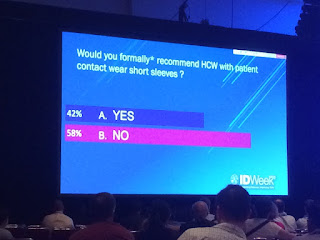 In my opinion, it is bad enough that Foley (urinary) catheters are overused and that urinalysis and urine cultures are ordered indiscriminately with little understanding of how to interpret the results. To further complicate matters, urine samples on catheterized patients are frequently collected in a suboptimal fashion, as suggested by this article recently published in the American Journal of Infection Control.
In my opinion, it is bad enough that Foley (urinary) catheters are overused and that urinalysis and urine cultures are ordered indiscriminately with little understanding of how to interpret the results. To further complicate matters, urine samples on catheterized patients are frequently collected in a suboptimal fashion, as suggested by this article recently published in the American Journal of Infection Control.
In this study, 76% of nurses surveyed reported receiving education on catheter associated UTI (CAUTI) risk reduction within the last
12 months. Strikingly, 327 (83%) of all nurses surveyed reported that they
never collect urine samples by draining directly from the drainage bag, yet only
58% viewed others to be fully compliant with that standard.
Improperly collected urine sample will lead to incorrect diagnostic and management decisions.
The overuse of urinary catheters is rampant. Besides ongoing education on urinary catheter use, the effect of which dissipates typically in 6 months, automated mechanisms for daily review and automatic discontinuation orders to limit catheter use are the most consistent and evidence based mechanisms to minimize CAUTIs.
It is to remove the urinary catheters in a consistent and formalized approach.
Improperly collected urine sample will lead to incorrect diagnostic and management decisions.
The overuse of urinary catheters is rampant. Besides ongoing education on urinary catheter use, the effect of which dissipates typically in 6 months, automated mechanisms for daily review and automatic discontinuation orders to limit catheter use are the most consistent and evidence based mechanisms to minimize CAUTIs.
It is to remove the urinary catheters in a consistent and formalized approach.












